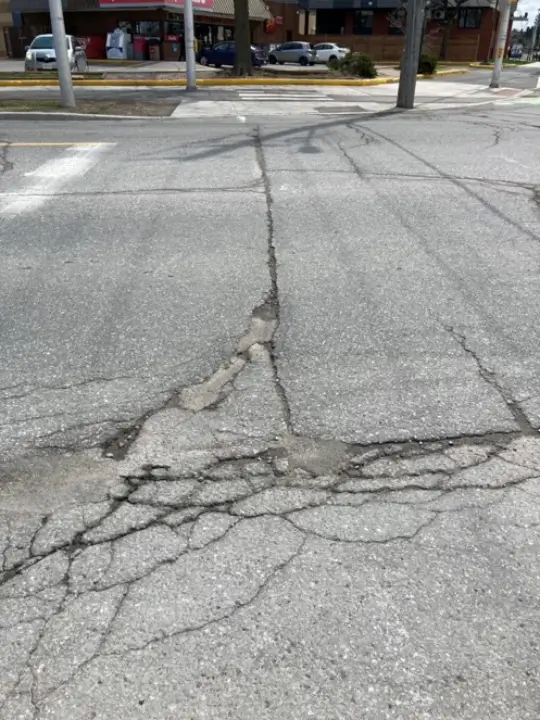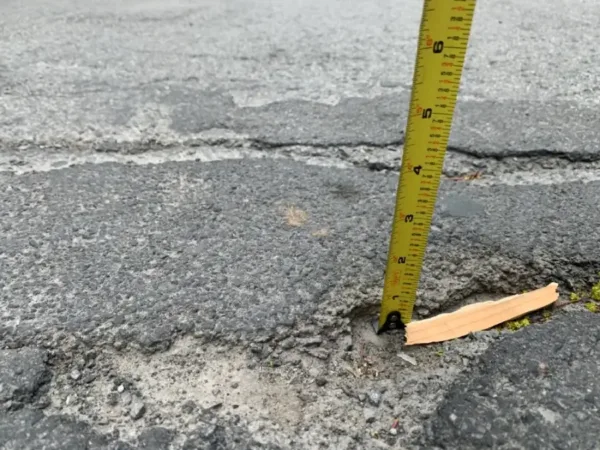10 Steps to Taking the Perfect Pothole Picture for Your Personal Injury Case
Canada’s gruelling, snowy winters take an enormous toll on our roads and sidewalks. Many Canadians are familiar with the nuisance of driving over a pothole-filled road during the springtime. In addition to their general annoying nature for drivers, pothole-filled roads constitute a significant source of injury for drivers, bikers, and pedestrians. Cities and private property owners are responsible for inspecting and maintaining their streets according to strict maintenance standards. However, when cities or private roads do not meet the standards, injuries often occur. If you are injured because of a pothole on the road, in addition to seeking legal advice, it is crucial that you properly photograph and document the area as soon as possible to help build your case. Photographs can serve as a critical piece of evidence that can help you prove the road’s dangerous condition at the time of your fall. Here are some things to consider so you can take the best pictures possible:
-
- Make sure you are safe. If your injury is severe or life-threatening, seek out medical care before worrying about photographing the area. If you are physically unable to take the photo yourself, forward this article to a friend or family member and send them on your behalf. Furthermore, do not put yourself or others at risk of further injury by taking photos on a busy road. Avoid taking your photo during rush hour or other busy travel times.
- Take several photos of the pothole from different angles. Photos taken from the side are more helpful in interpreting depths than photos taken from directly above. Also, take a wider angle shot showing the location and other relevant landmarks and obstacles such as curbs, street paint and sidewalks.
Here is an excellent example of a wide-angled photo:

Notice how the photo captures the context of a large pothole along a crosswalk at a busy, industrial intersection.
-
-
- Measure the length, width and depth of the hole. Ideally, use a tape measure or a ruler, but you can also use an everyday item such as a bike helmet or a coin to provide a sense of the scale.Pro Tip: Most iPhones have a preinstalled ‘Measure’ app that lets you quickly and accurately document the pothole’s length, width and depth. After measuring using the app, remember to take a screenshot to save your work.
Here is an example of how to measure and photograph the width and depth of a pothole:


- Take your photographs with good lighting, ideally during daylight. Try to avoid major shadows since they can be confusing to interpret.
- Document basic information such as the road name, direction of travel, major nearby intersections, the exact spot of your injury and other relevant information. It is also good to write down as soon as possible exactly what happened as you remember it. You can use either a pen and paper or the ‘Notes’ app on your phone.
- Video footage of your fall can also be helpful for your case. Ask any nearby stores, houses, or witnesses if they have security cameras positioned where you fell. Be sure to reach out quickly since most stores delete security footage monthly.
- Keep your face and body out of the shots. Personalizing the photos can be distracting for engineers and other professionals trying to interpret them.
- Take the photos as soon as possible after your injury. Potholes can be filled or changed quickly, especially during the spring season when the city does most of its repairs.
- Photograph your injuries and damaged property, including bikes, motorcycles, helmets and clothing.
- After gathering your evidence, you should visit your city’s website and report the pothole to prevent further injuries. If you live in Ottawa or Toronto, you can also report the pothole by calling 3-1-1.
- Photograph your injuries and damaged property, including bikes, motorcycles, helmets and clothing.
- After gathering your evidence, you should visit your city’s website and report the pothole to prevent further injuries. If you live in Ottawa or Toronto, you can also report the pothole by calling 3-1-1.
Navigating a slip and fall case can be a complex, overwhelming process. It is a good idea to meet with a lawyer to receive the most compensation possible for your injury. For help with your slip and fall case, call the experienced personal injury lawyers at Auger Hollingsworth Professional Corporation. We can be reached at 613 801-8572.
-














